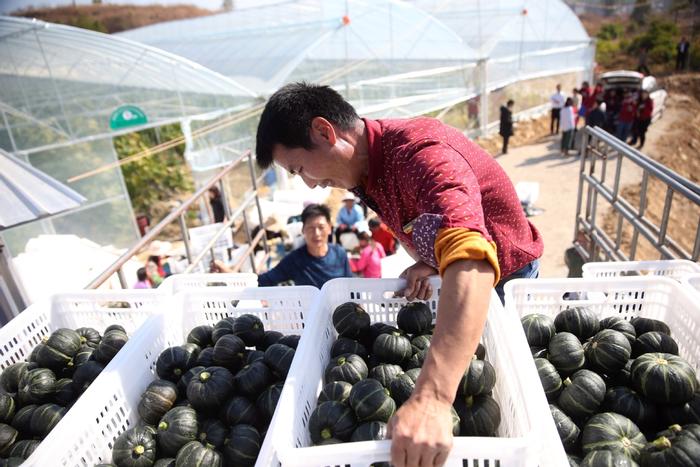Orange growers enjoy fruits of wealth program


Measures
Surrounded by mountains, Huichang had been on the list of national-level poverty-stricken counties since 1986, when the government first established bodies at all levels to tackle the problem.
Like many rural areas, poor transportation infrastructure and a lack of cultivable farmland constrained Huichang's economic development. What's more, limited resources and opportunities meant people often found it difficult to raise their living standards.
A number of problems led Huichang's population into poverty. In 2013, more than 40 percent of its impoverished residents had serious illnesses or were supporting family members who were ill.
Also, some didn't have enough farmland to support their families, while others didn't want to make the effort to turn their lives around, said Li Weiming, director of the county's poverty alleviation office.
"Previous poverty alleviation projects were more about boosting the local economy in general, but the 2013 plan was people-oriented. Every individual who needs help has a tailor-made plan based on their circumstances to ensure they can get out of poverty," he said.
The Nantian village committee opened a file on every poverty-stricken resident, detailing the causes of their situation and the support policies available to remedy it.
Like villages in Huichang and elsewhere in China, the files are printed out and hung on the wall of village committee offices to constantly remind officials of their most important task.
Every time a villager's income rises above the poverty line and his or her condition surpasses national assessment standards, the officials stick a label saying "out of poverty" on the file. At the same time, the person's status is amended in the national poverty alleviation database.
As more labels appear on the walls of committee offices countrywide, China's progress in poverty alleviation becomes increasingly obvious.
The number of impoverished people nationwide fell to 5.51 million at the end of last year, from nearly 100 million at the end of 2012. Also, the poverty headcount ratio has fallen to 0.6 percent from 10.2 percent during the time the plan has been in operation, President Xi Jinping said at a poverty alleviation symposium on March 6.
Li Weiming said: "Income is not the sole target when it comes to poverty alleviation assessment. If villagers don't have access to schooling, healthcare, safe housing and clean drinking water, they cannot be crossed off the list of impoverished people, even if their annual income is above the poverty line."
In 2010, that line was defined as annual per capita income of 2,300 yuan. The figure is adjusted annually for inflation, and last year, it was 3,747 yuan ($528).
In 2015, Li Fashun stopped worrying about the medical bills because his father became eligible for government-funded commercial health insurance for the impoverished rural population, which paid 90 percent of the treatment costs.
As his father's condition improved, Li Fashun was able to devote more time to his orange groves. The improvements didn't stop there, though, because he spotted a new opportunity.
In 2016, he applied for an interest-free loan designed to help people living in poverty start small businesses. He used the 80,000 yuan he received to join a cooperative established by local orange growers.
Together, they founded an online store to sell the fruit, and saw business boom.
Li Fashun paid off the loan in three years and started saving to clear his other debts.
Last year, an "out of poverty" label was put on his file. "Whatever you want to do to get out of poverty, there is support available. All I needed was to be ambitious," he said.
MOST POPULAR
- 1 Chinese cities dominate global science rankings for first time: Nature
- 2 Beijing cautions tourists over Japan travel risks
- 3 Nation offering great opportunities for global biz
- 4 China implements higher-level financial opening-up policies in Hainan
- 5 Policy allowing Guangdong vehicles to travel to Hong Kong takes effect







